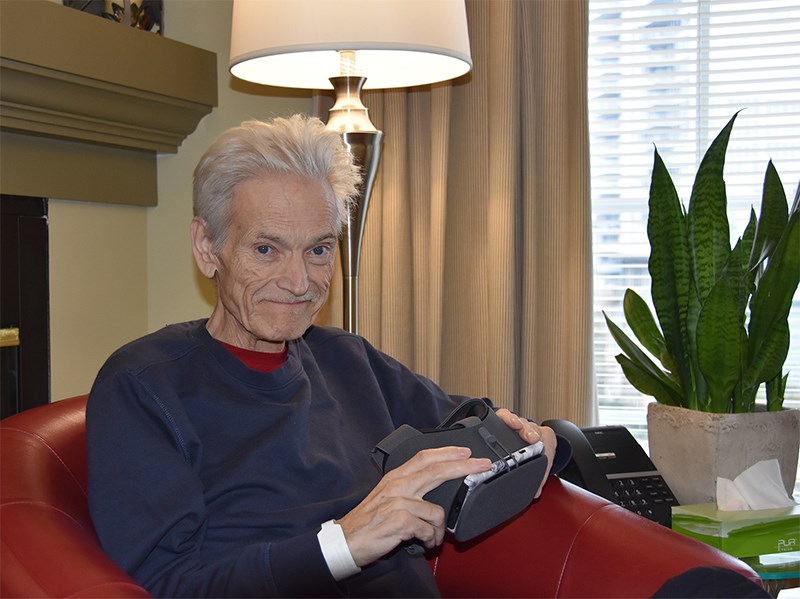Crossroads Hospice at Inlet Centre in Port Moody is encouraging its palliative care patients to run with the lions, live life on Mars and experience New York and Paris — all from the comfort of a chair, couch or bed.
“It’s like having your own personal Imax Theatre,” said Daniel Einarsson, a musician, who was one of the first patients to use the new Google Dreamscape headset provided by a local donor that enables 360 degree virtual reality via special videos and equipment.
Einarsson puts on the Google headset, with a Pixel 2 phone slipped into the front, and using a small controller can scroll through virtual reality experiences offered via Youtube or other platforms.
He chooses to watch a National Geographic film of a male lion and its mother feed and doze in the sun in Africa.
The 360 degree experience is as lifelike as one will find in a hospice next to a busy road in downtown Port Moody.
“If nothing else, it’s a great distraction from your troubles,” acknowledges Einarsson, who plays the guitar and has his own Youtube performance of a piece called Tenderness he wrote for his nurses when he had a tumor removed. (Find it under Susan Einarsson’s YouTube channel).
There are many ways Crossroads tries to bring comfort and a home-like feel to its 15-year-old Inlet Centre hospice, but this is one of the more novel and intriguing admits Tereza McDermid, executive director for the Crossroads Hospice Society, which celebrates its 30th anniversary this year.
McDermid is studying how to use the system, one of two that were recently donated, and says it’s a simple way to give patients a bucket-list experience as they live out their finals days.
Although some people may be more comfortable with the technology then others, McDermid says some of her patients are willing to try new experiences. For these people, the Google Dreamscape headset and virtual reality video is a great idea.
“There’s some 75 years olds who act like 20 year olds — they might want to experience a new thing while they’re here. It gives them something to talk about.”
Patients who stay at the hospice — with its comfy couches, dining table and open-plan kitchen — have access to a number of programs, including pet therapy, music therapy, art therapy, and healing touch. There is also Wifi, cordless telephones and a full-colour flatscreen TV in each room.
But volunteers who are searching for ways to make patients feel more comfortable now have virtual reality technology to propose and McDermid said it’s an option not a requirement.
“Depending on where they are in their life’s journey, this is something they could do and we would be very careful.”
For Einarsson, it was a fun way to experience new videos, and told the Tri-City News he’d gladly recommend it to others



